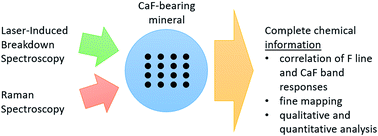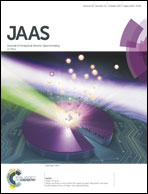Detection of fluorine using laser-induced breakdown spectroscopy and Raman spectroscopy
Abstract
In general, the detection of F and other halogens is challenging through conventional techniques. In this paper, various approaches for the qualitative and quantitative analysis of F using the laser-induced breakdown spectroscopy (LIBS) technique were demonstrated. In LIBS, fluorine detection can be realized by means of atomic lines and molecular bands. For the purposes of our experiment, two sets of pellets with various contents of CaF2, CaCO3 and cellulose were analyzed using a lab-based LIBS system under a He atmosphere. The fluorine atomic line at 685.60 nm was correlated with CaF signals proving their close relationship. Consequently, the limits of detection were determined for both analytical signals. Moreover, conditions necessary for the quantification of F via CaF band signals were estimated. The dependence of the CaF signal on the varying ratio of Ca and F contents was investigated. Finally, a chip of a real CaF2 crystal was prepared and its surface was mapped with Raman and LIBS systems. The obtained elemental and molecular maps showed good numerical correlations. Thus, the yielded results validated the possibility to substitute the fluorine atomic line by non-conventional CaF molecular bands in the qualitative and quantitative LIBS analysis of fluorine.



 Please wait while we load your content...
Please wait while we load your content...